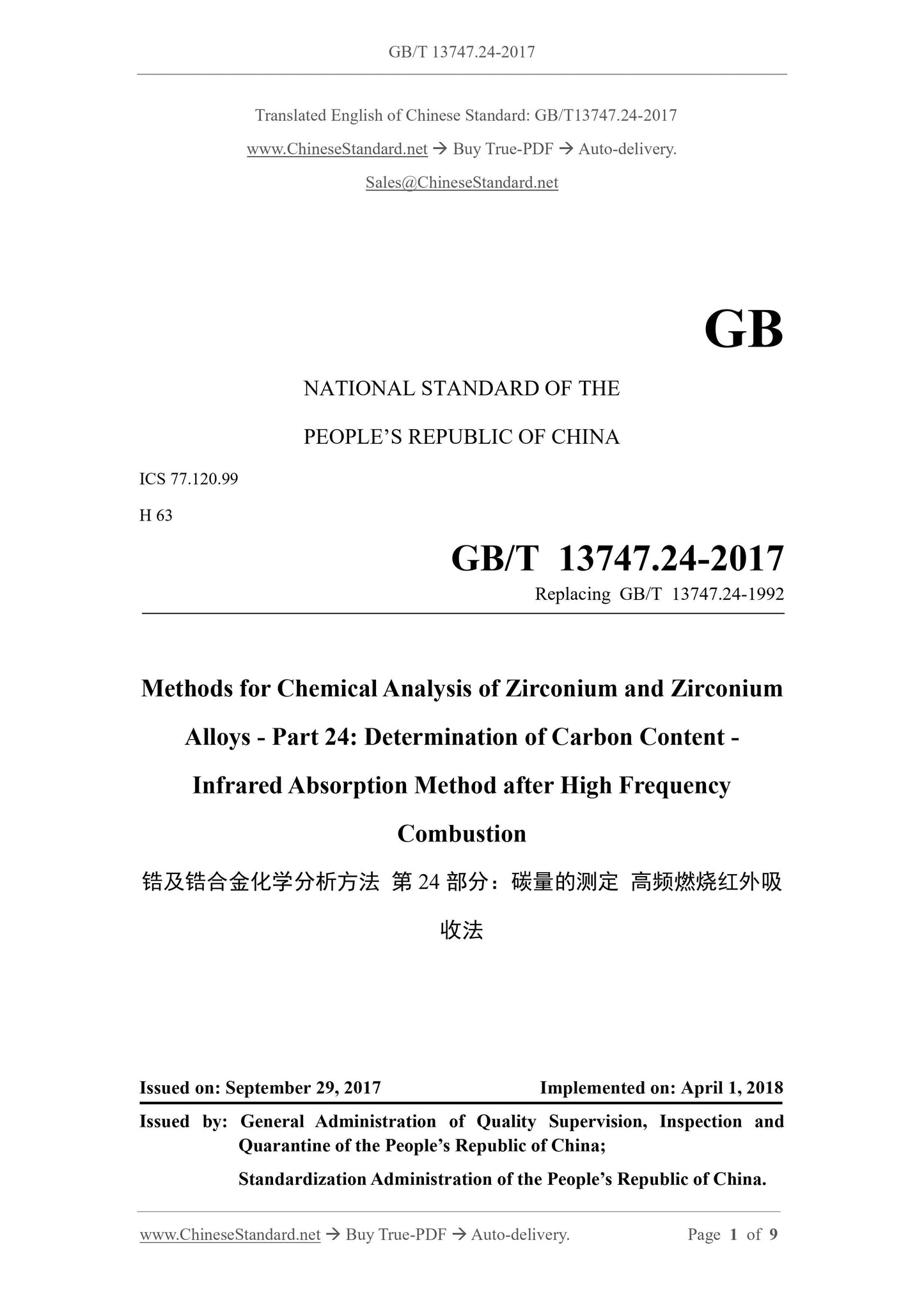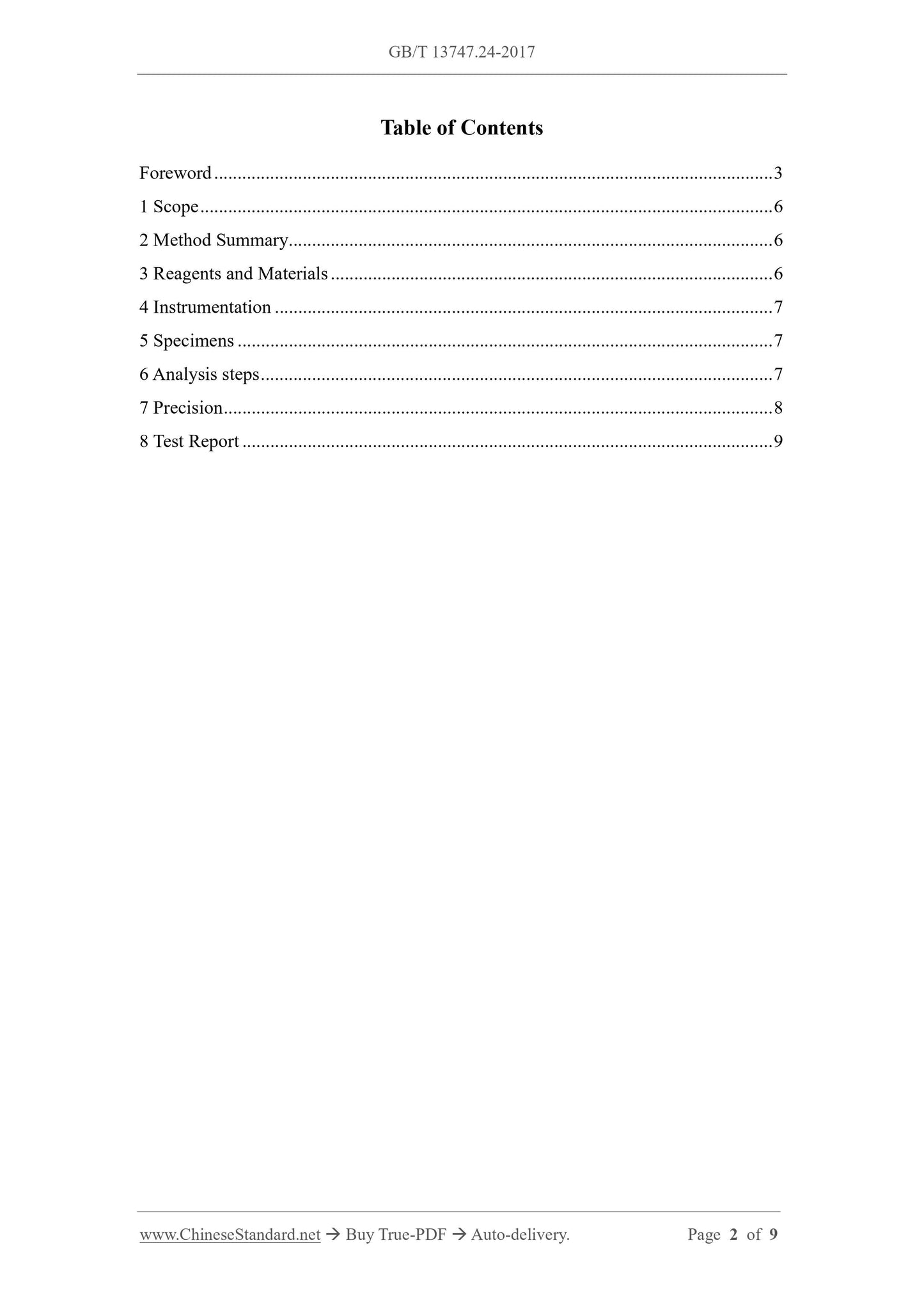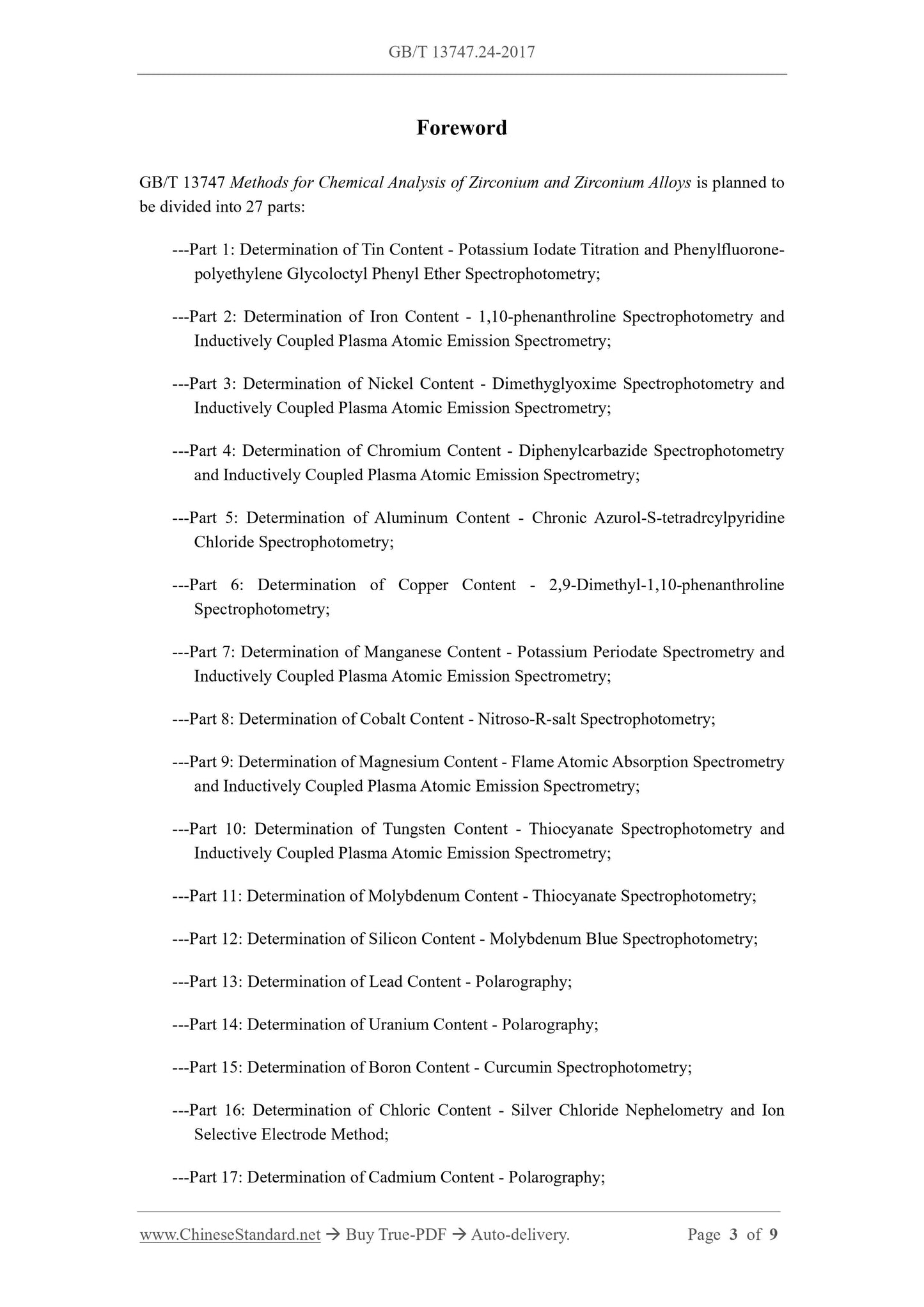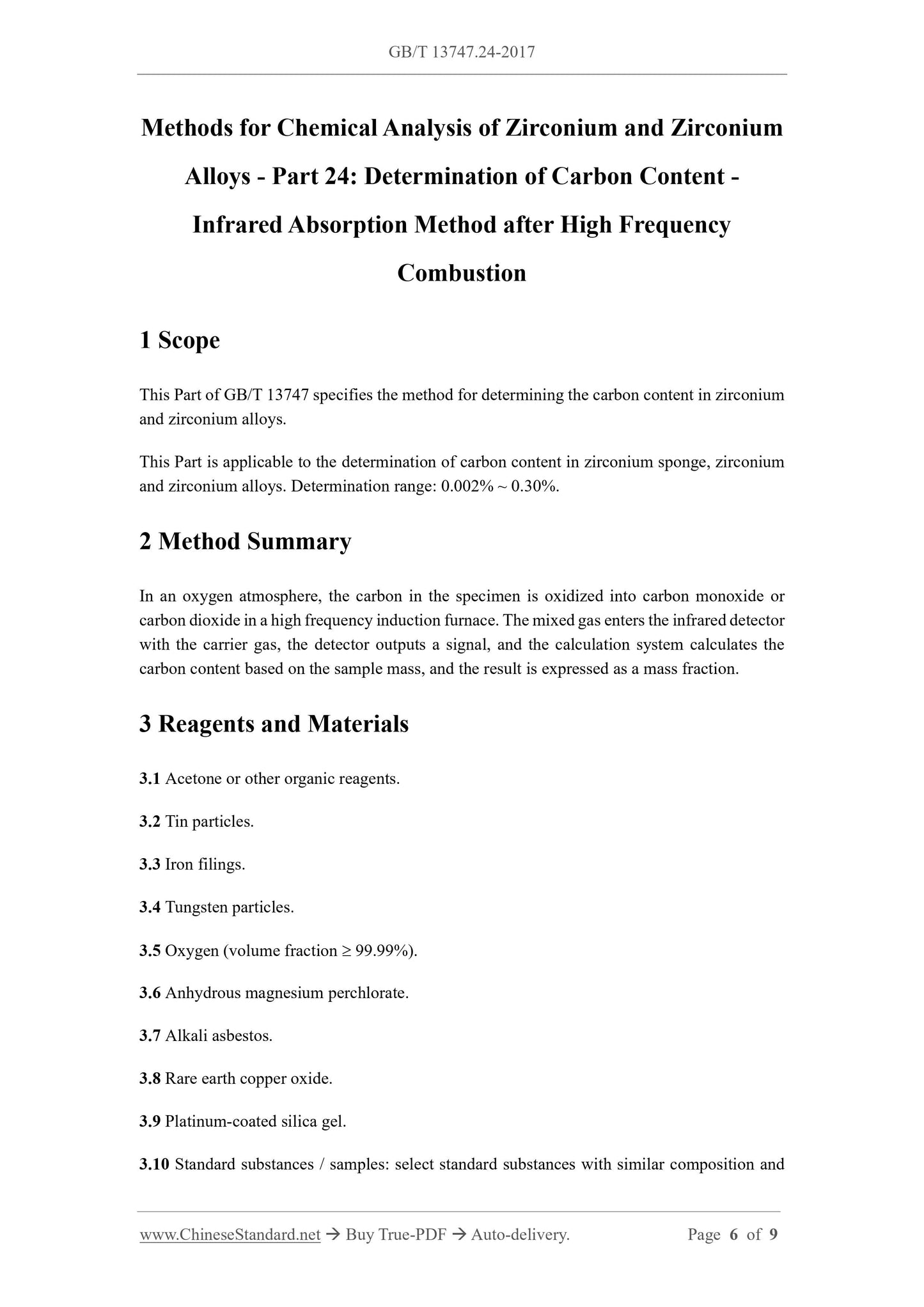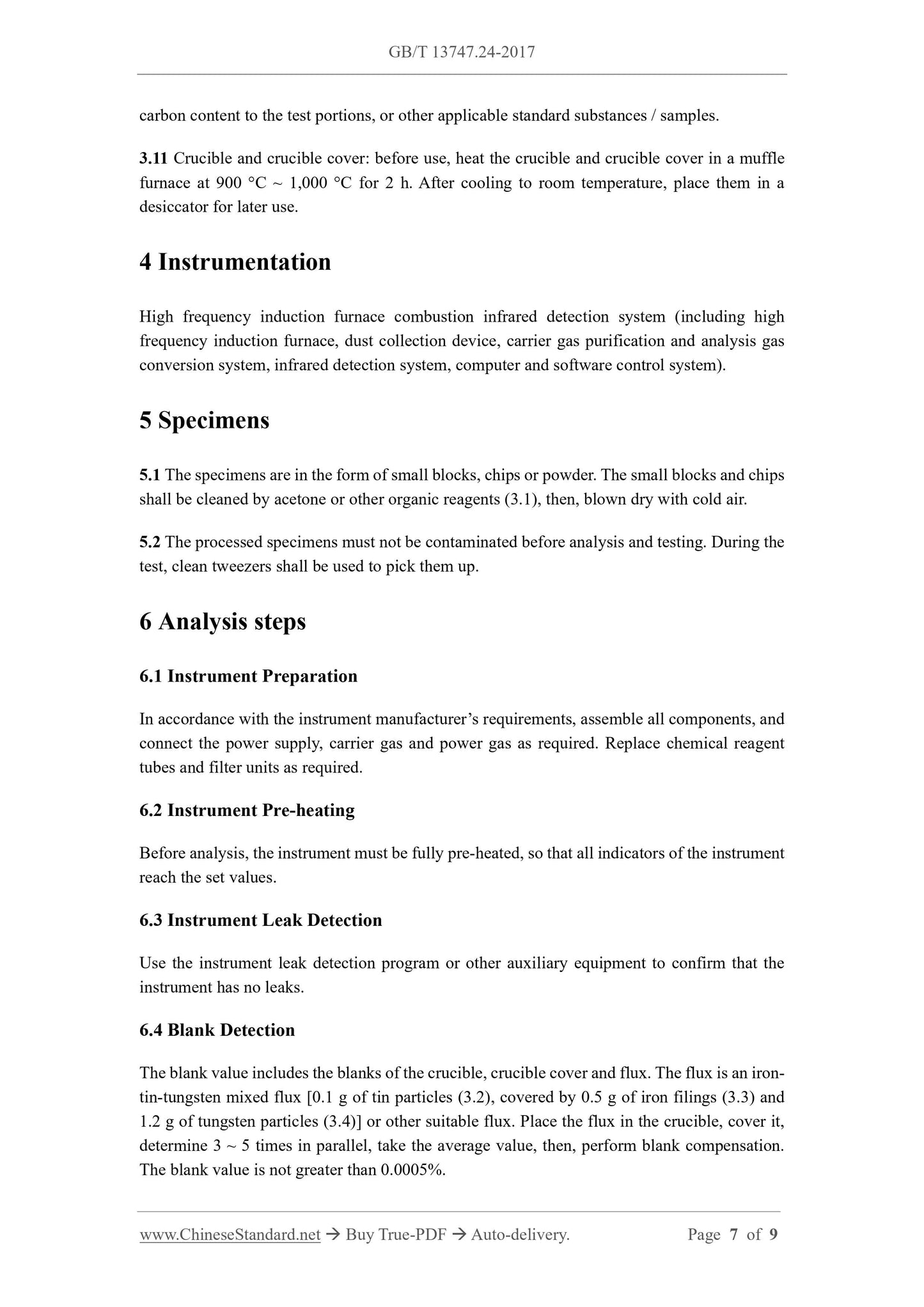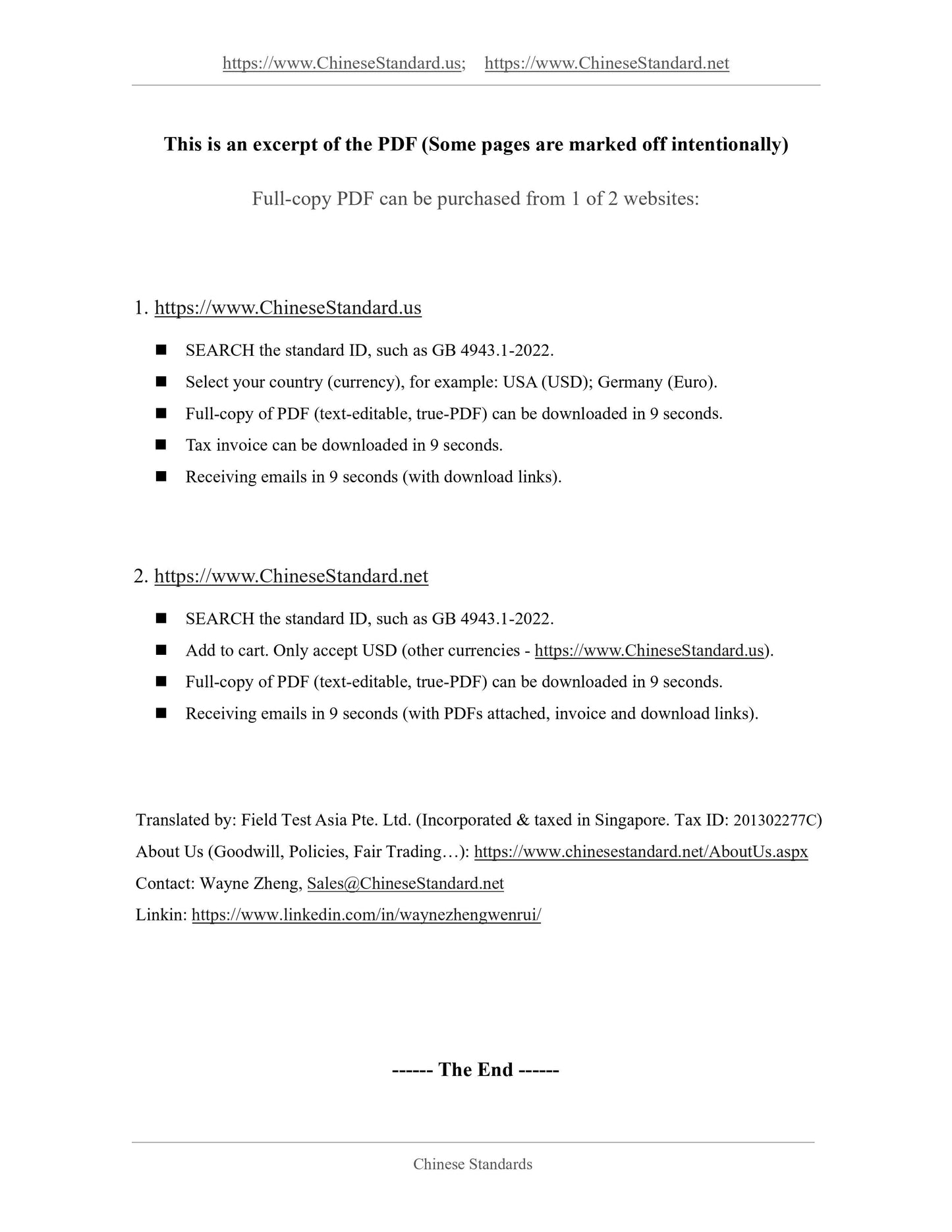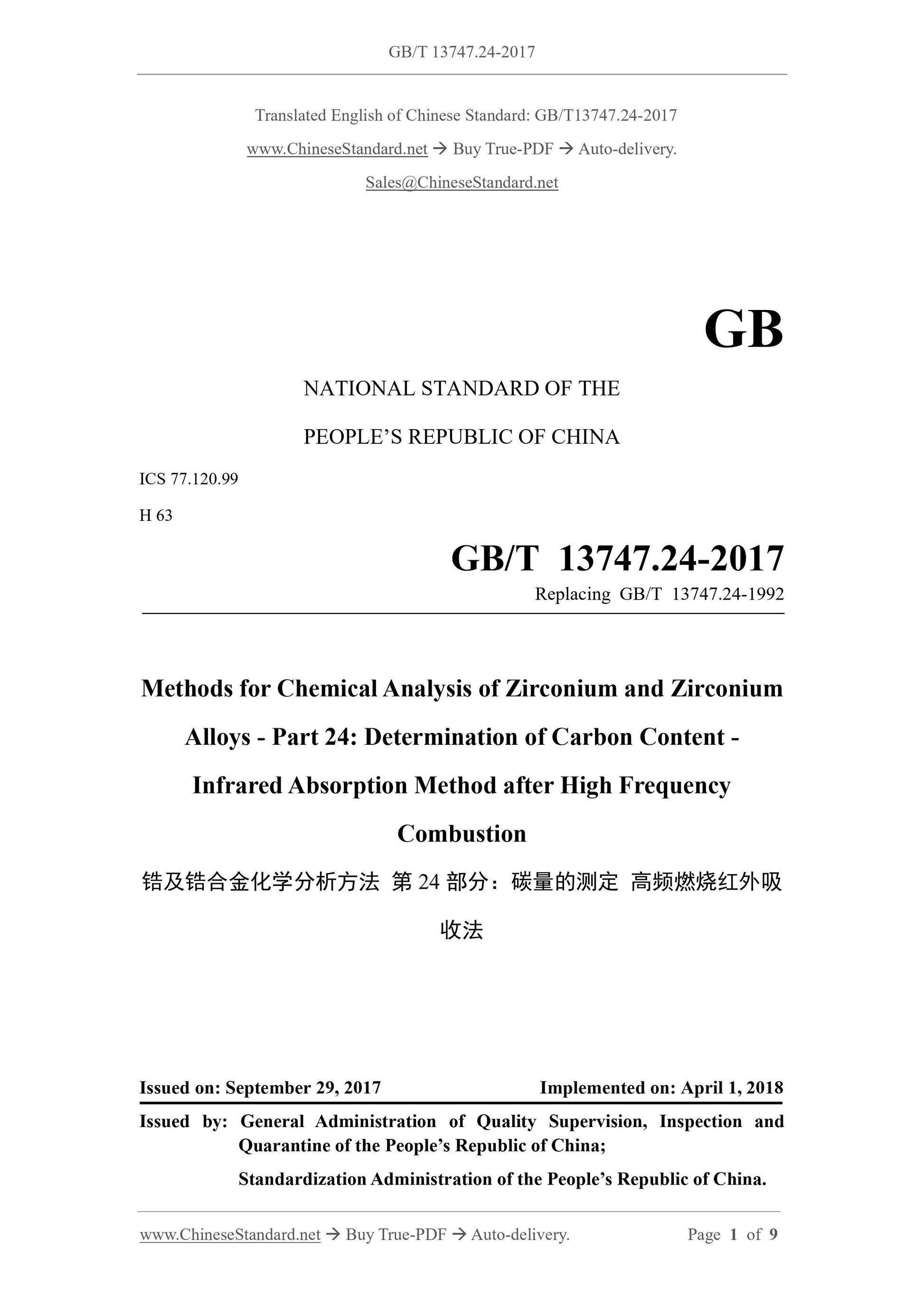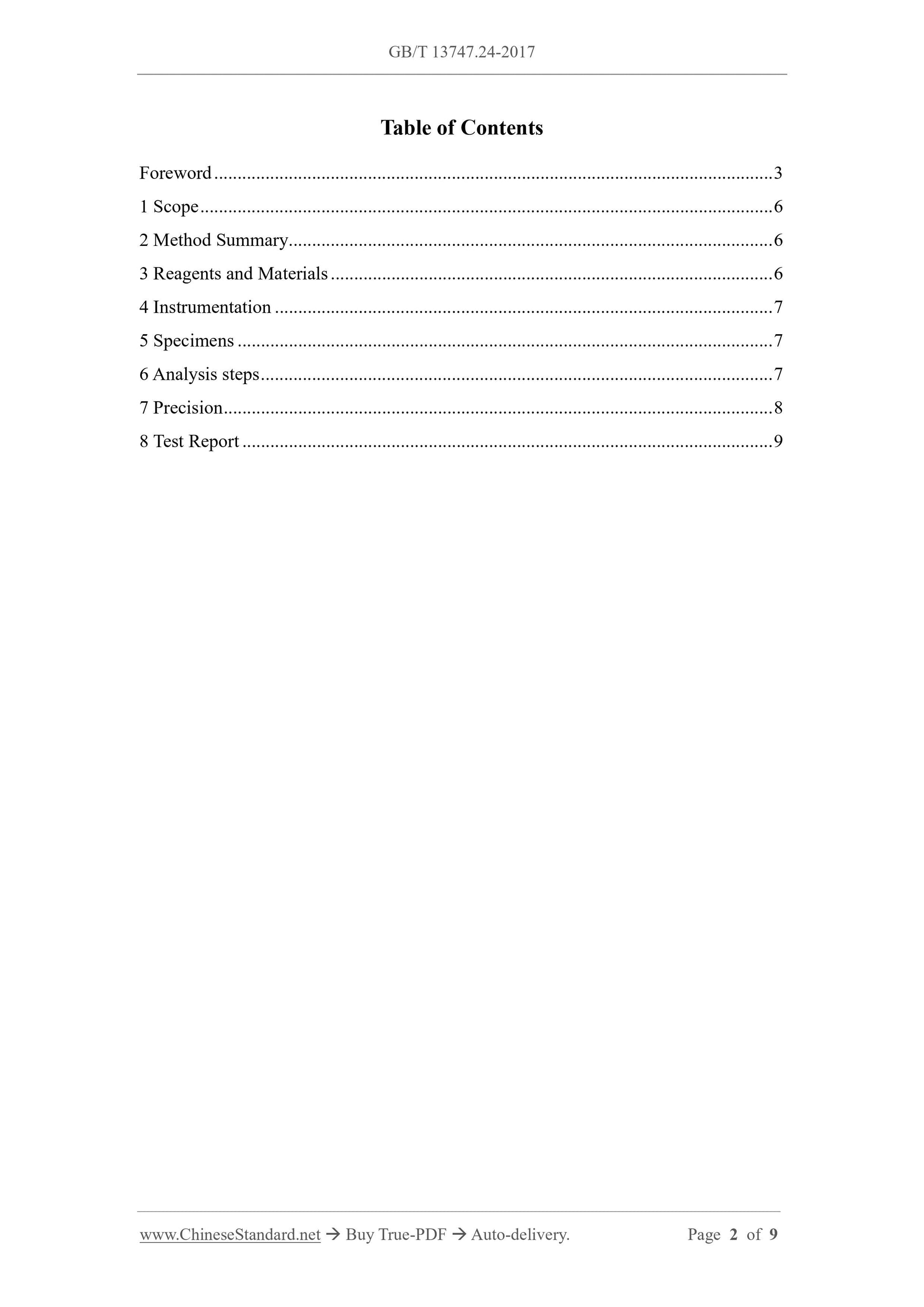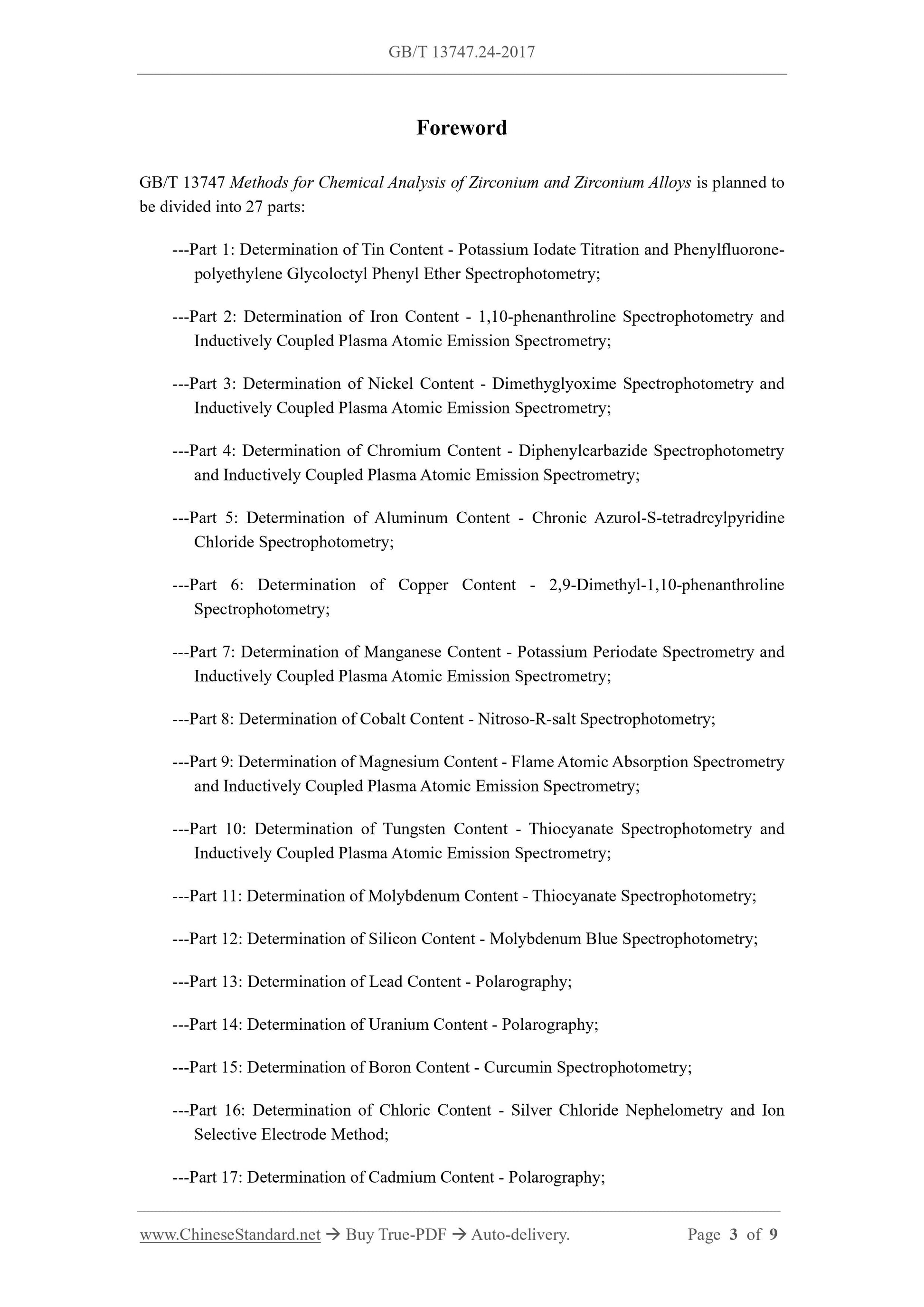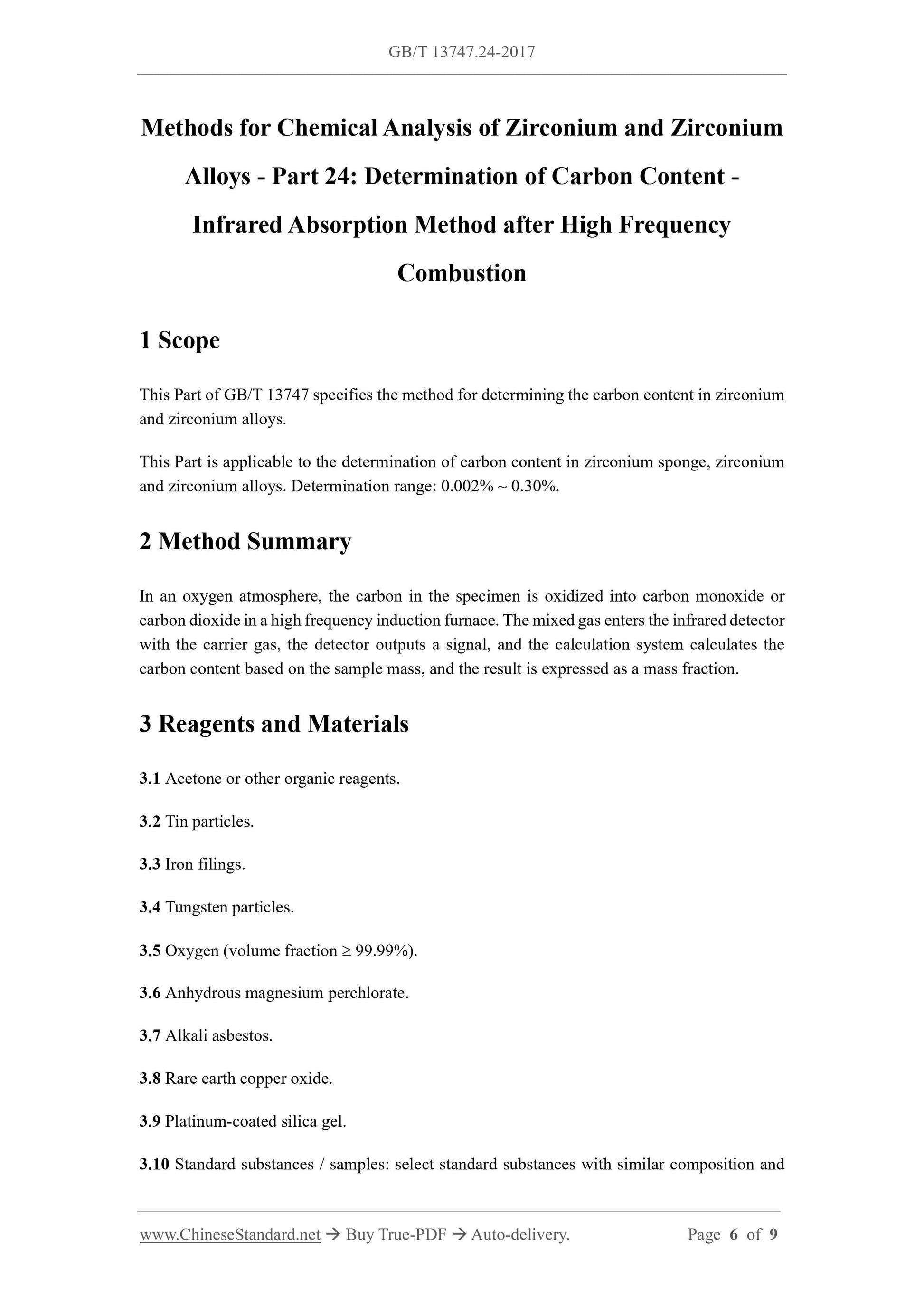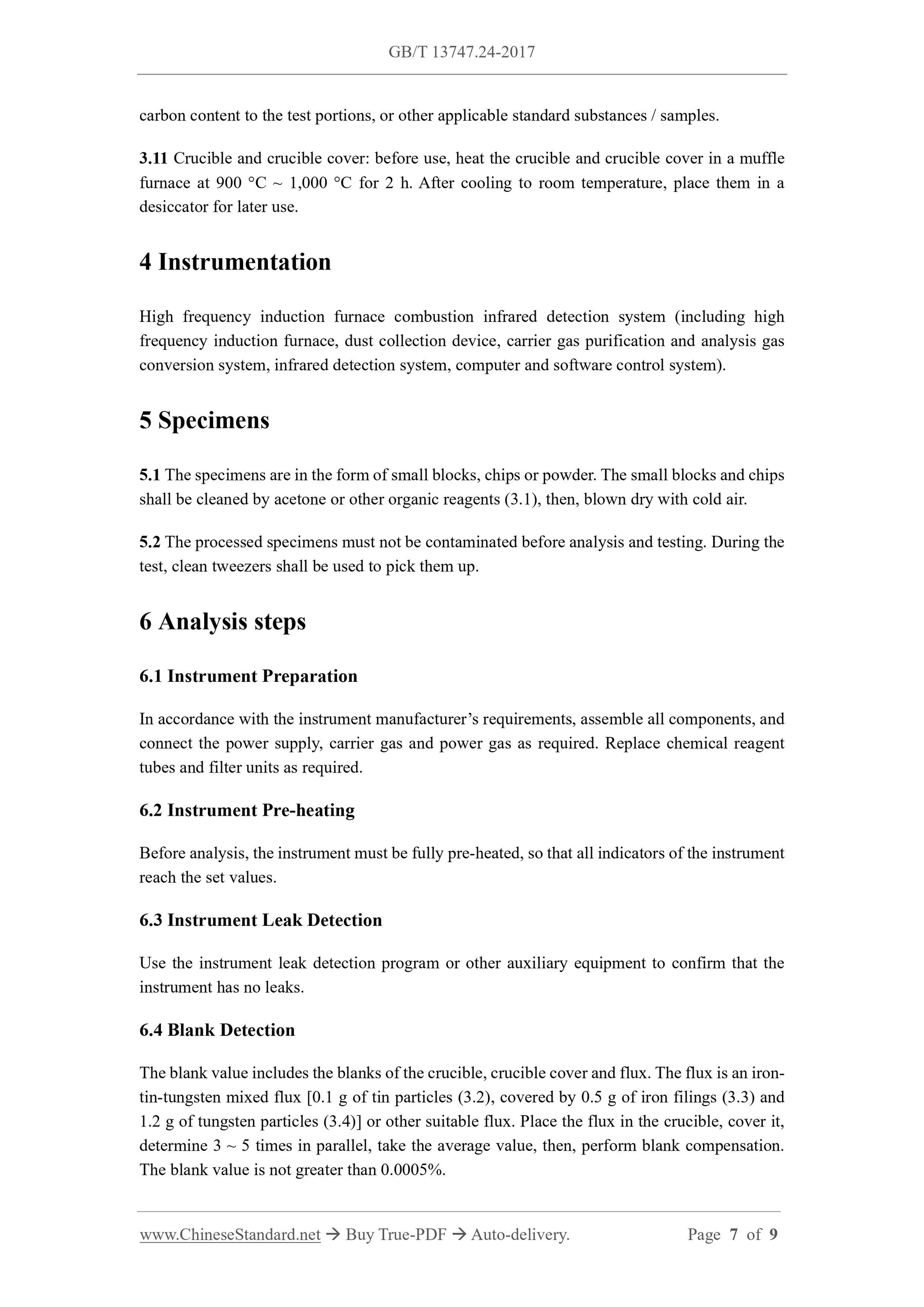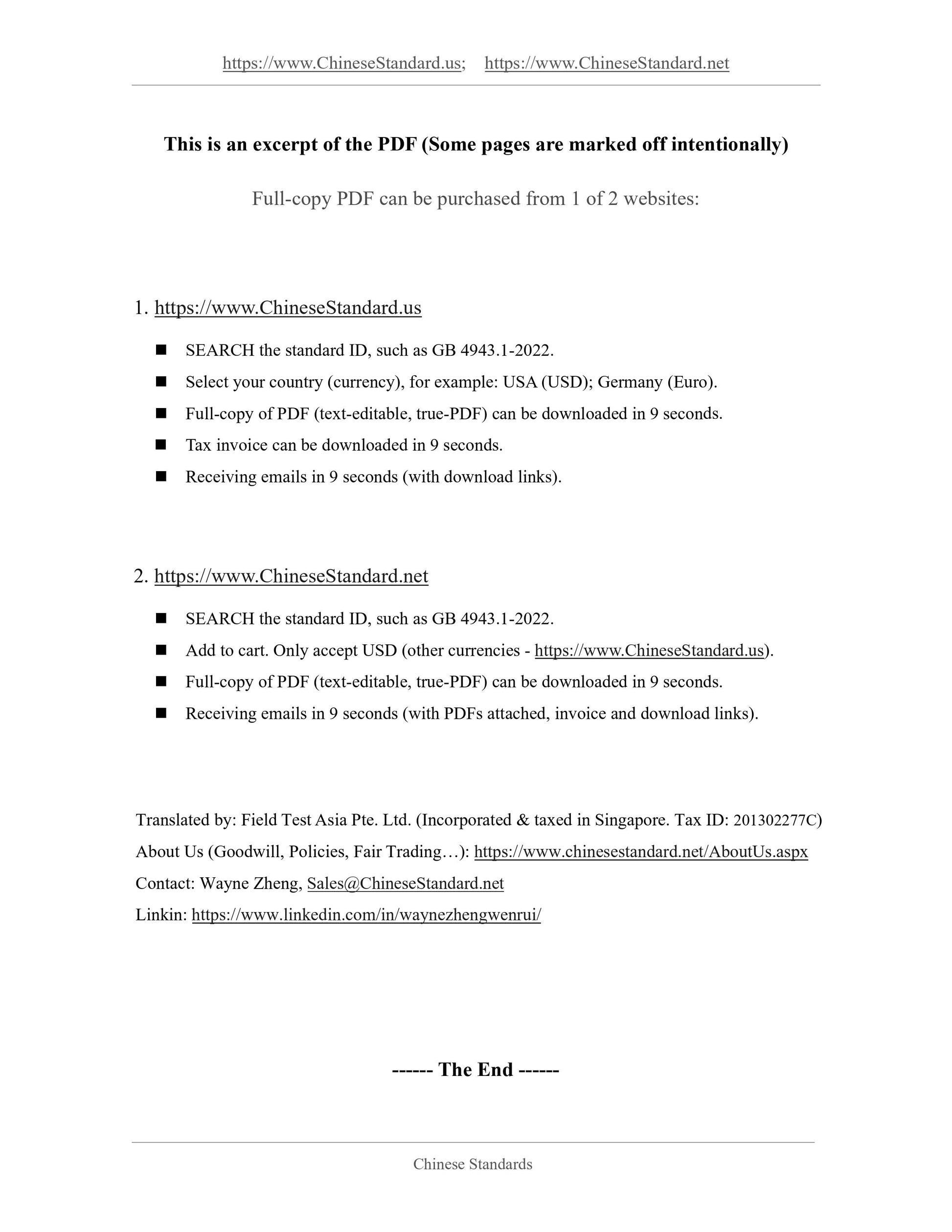1
/
of
6
www.ChineseStandard.us -- Field Test Asia Pte. Ltd.
GB/T 13747.24-2017 English PDF (GB/T13747.24-2017)
GB/T 13747.24-2017 English PDF (GB/T13747.24-2017)
Regular price
$105.00
Regular price
Sale price
$105.00
Unit price
/
per
Shipping calculated at checkout.
Couldn't load pickup availability
GB/T 13747.24-2017: Methods for chemical analysis of zirconium and zirconium alloys -- Part 24: Determination of carbon content -- Infrared absorption method after high frequency combustion
Delivery: 9 seconds. Download (and Email) true-PDF + Invoice.Get Quotation: Click GB/T 13747.24-2017 (Self-service in 1-minute)
Newer / historical versions: GB/T 13747.24-2017
Preview True-PDF
Scope
This Part of GB/T 13747 specifies the method for determining the carbon content in zirconiumand zirconium alloys.
This Part is applicable to the determination of carbon content in zirconium sponge, zirconium
and zirconium alloys. Determination range. 0.002% ~ 0.30%.
Basic Data
| Standard ID | GB/T 13747.24-2017 (GB/T13747.24-2017) |
| Description (Translated English) | Methods for chemical analysis of zirconium and zirconium alloys -- Part 24: Determination of carbon content -- Infrared absorption method after high frequency combustion |
| Sector / Industry | National Standard (Recommended) |
| Classification of Chinese Standard | H63 |
| Classification of International Standard | 77.120.99 |
| Word Count Estimation | 6,644 |
| Date of Issue | 2017-09-29 |
| Date of Implementation | 2018-04-01 |
| Issuing agency(ies) | General Administration of Quality Supervision, Inspection and Quarantine of the People's Republic of China, Standardization Administration of the People's Republic of China |
Share
